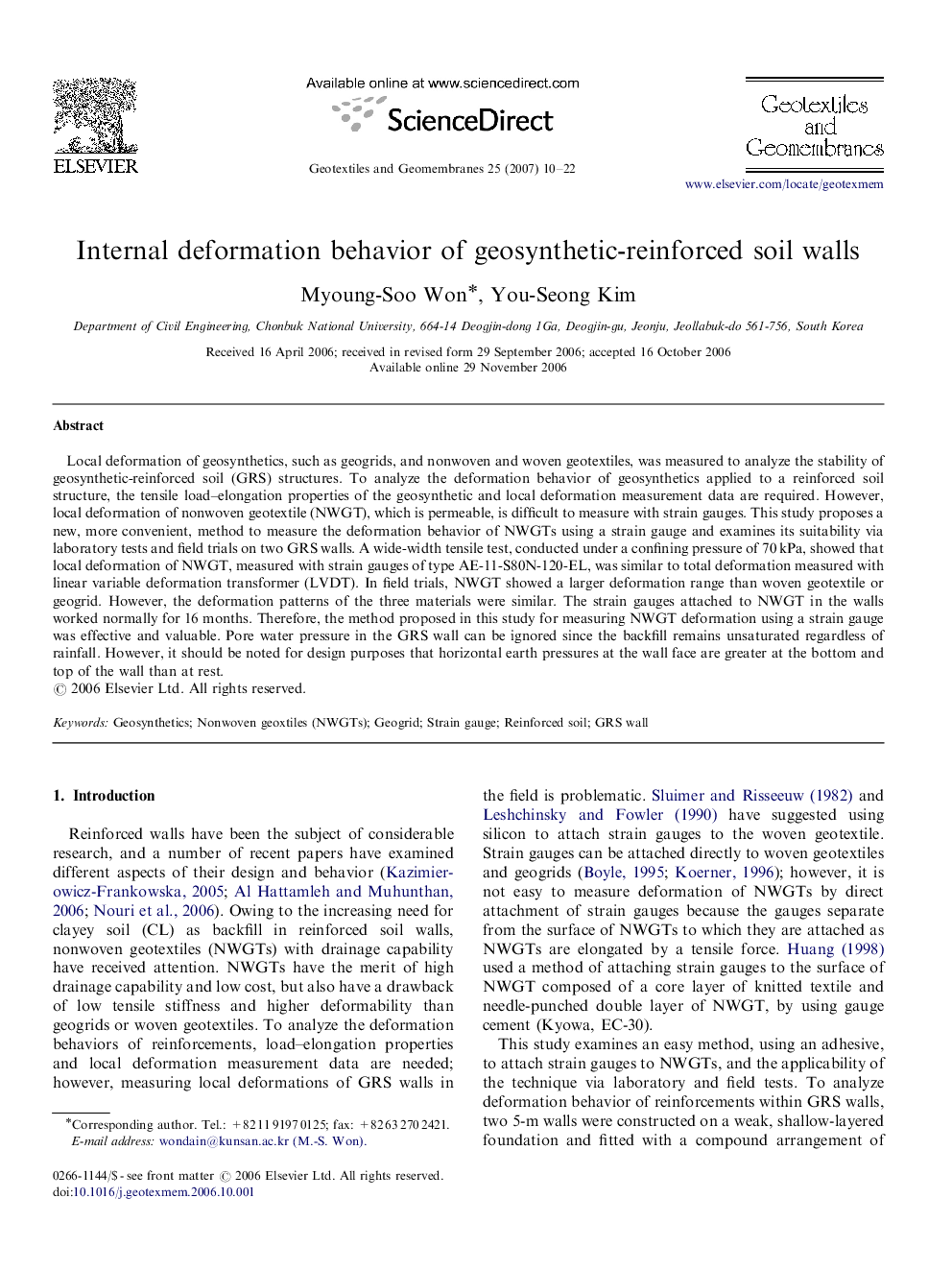| Article ID | Journal | Published Year | Pages | File Type |
|---|---|---|---|---|
| 274534 | Geotextiles and Geomembranes | 2007 | 13 Pages |
Local deformation of geosynthetics, such as geogrids, and nonwoven and woven geotextiles, was measured to analyze the stability of geosynthetic-reinforced soil (GRS) structures. To analyze the deformation behavior of geosynthetics applied to a reinforced soil structure, the tensile load–elongation properties of the geosynthetic and local deformation measurement data are required. However, local deformation of nonwoven geotextile (NWGT), which is permeable, is difficult to measure with strain gauges. This study proposes a new, more convenient, method to measure the deformation behavior of NWGTs using a strain gauge and examines its suitability via laboratory tests and field trials on two GRS walls. A wide-width tensile test, conducted under a confining pressure of 70 kPa, showed that local deformation of NWGT, measured with strain gauges of type AE-11-S80N-120-EL, was similar to total deformation measured with linear variable deformation transformer (LVDT). In field trials, NWGT showed a larger deformation range than woven geotextile or geogrid. However, the deformation patterns of the three materials were similar. The strain gauges attached to NWGT in the walls worked normally for 16 months. Therefore, the method proposed in this study for measuring NWGT deformation using a strain gauge was effective and valuable. Pore water pressure in the GRS wall can be ignored since the backfill remains unsaturated regardless of rainfall. However, it should be noted for design purposes that horizontal earth pressures at the wall face are greater at the bottom and top of the wall than at rest.
